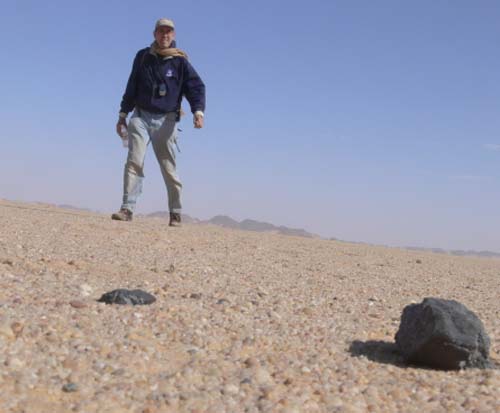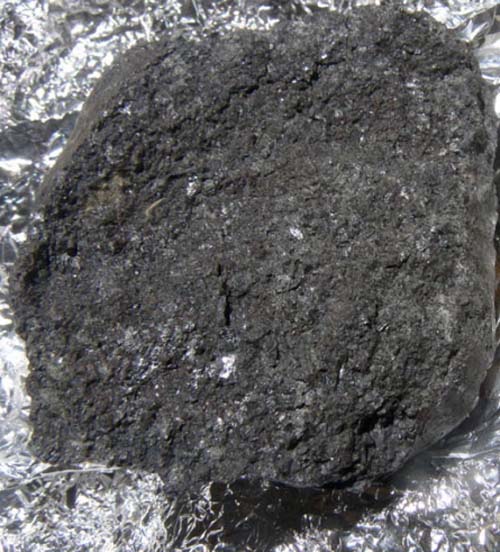Detecting building blocks of extraterrestrial origin
Scientist Peter Jenniskens is approaching one of the meteorites in the Nubian desert of Sudan, containing an invaluable source of information about planets.

In 2008, an asteroid broke apart in the Earth's atmosphere. Fragments of asteroids have fallen into a desert in Africa in the form of meteorites. Since then, scientists have focused on studying these meteorite samples to learn more about the asteroid's material structure, which exists in the same galaxy with our Earth. Samples of meteorites that have descended from the earth come from space, containing an invaluable source of information about planets, asteroids and the possibilities of finding life in the solar system.
Scientists have discovered the unexpected presence of building blocks for proteins called amino acids, in meteorites. We know that amino acids are important constituents of proteins, and proteins that underlie the structure and function of the organism, of all life forms, including humans. The proteins are formed from chains of amino acids. For this reason, amino acids are often called ' building blocks ' of proteins, and are the building blocks of life .
Amino acids are also called organic compounds because they contain carbon atoms, a basic component of life. Amino acids are an important component of life, but in essence they are not living organisms. In other words, meteors never transport life outside of space to the surface of the Earth.

" Amino acids are formed in an environment that we really don't think is possible, " said Daniel Glavin, a researcher of asteroid-derived meteorites, working at NASA Goddard Space Flight Center at Greenbelt, Md, USA.
Asteroids, perhaps a segment of a certain planet, have existed since the early days of the solar system's formation. This means that asteroids are formed in relatively high temperatures, enough to melt iron. Therefore, amino acids do not exist at the time when planets are forming. Amino acids must appear later.
On Earth, amino acids cannot form without surrounding water. But meteorites, where Glavin and his team found amino acids, came from asteroids without water.
Glavin, however, suspects that amino acids have formed on asteroids, but long after it has cooled. This asteroid may have occurred through a chemical process involving gases such as carbon monoxide, hydrogen, ammonia and metals such as iron or nickel.
The discovery of the existence of extraterrestrial amino acids makes scientists more optimistic about the prospect of finding life outside of our planet.
- Detecting extraterrestrial creatures?
- Detecting wooden blocks with strange shapes over 500 years old on the seabed
- Discover our incredible alien origins ...
- Detecting traces of 'legendary continent'
- Robots can assemble themselves like in fiction
- 'Decoding' origin of Antarctic dust
- Detecting emerald blocks longer than 1m, weighs 3.6 quintals
- Cosmic meteorite originated from ... Earth
- From the distinguished school in Puma Punku
- Discover the largest ancient stone by humans
- Detecting traces of origin forming groundwater on the surface of Mars
- He tried to find extraterrestrial life
 Van Allen's belt and evidence that the Apollo 11 mission to the Moon was myth
Van Allen's belt and evidence that the Apollo 11 mission to the Moon was myth The levels of civilization in the universe (Kardashev scale)
The levels of civilization in the universe (Kardashev scale) Today Mars, the sun and the Earth are aligned
Today Mars, the sun and the Earth are aligned The Amazon owner announced a secret plan to build a space base for thousands of people
The Amazon owner announced a secret plan to build a space base for thousands of people